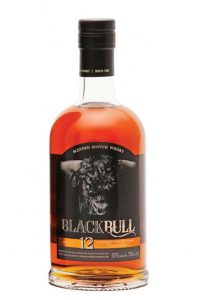Chivas v. Johnnie
The Apostles got an interesting Christmas present this year. Pernod Ricard asked us to review their Chivas Regal 18 year old blend up against Diageo’s Johnnie Walker Blue Label and they sent us samples of each. In this age of global economic crisis, the good folks at Pernod are trying to offer an alternative to the “super premium” options this holiday season. They believe that Chivas Regal 18 is on par with the much more expensive Johnnie Walker Blue Label (maybe not as super premium as Bowmore Gold, but still out of our usual price range) and should be considered when you head out to buy your holiday dram. In the interest of full disclosure we must point out that Matt has always believed Blue Label overpriced and a product of good marketing more than good blending. He’s more a fan of the Gold Label. Richard is a fan of both even before putting them head to head. Now, let’s see how this goes.
(We are foregoing the usual “Comments” sections for a comparative conclusion)
Chivas Regal Gold Signature Scotch Whisky, Aged 18 Years
40% ABV/80 Proof
$55 – $70
Widely Available
What the Blender Says
From Master Blender Colin Scott – A welcoming, rewarding whisky. Exceptional richness with multi-layered aromas of buttery toffee, dark chocolate and dried fruits. Hints of spices and smoke. The voluptuous, velvety palate develops into an extremely long, warm finish.
What Richard Says:
Nose: Slightly vegetal with malty notes. Buttery with hints of orange.
Palate: Develops slowly in the mouth, like a lovely lady slowly undressing. Just a hint of sweetness and a palate that’s smokier than the nose would let on. Spice laden oak.
Finish: The finish is very clean. It’s like the same lady who was seducing you on the palate has left in the middle of the night and leaves you wanting.
Rating: Must Buy
What Matt Says:
Nose: Enchanting. Tart green apple, brown sugar, streusel, hints of pipe tobacco, dark chocolate and berries.
Palate: Dark chocolate, toffee, pipe smoke and dark fruits. Basically, all the notes from the nose are present in the palate. This dram has round and velvety mouth feel.
Finish: Long and luscious. Tastes like an apple tart with blackberries and chocolate.
Rating: Must Buy
Johnnie Walker Blue Label
40% ABV/ 80 Proof
$150 – $200
Widely Available
What the Blender Says
Johnnie Walker Blue Label Scotch whisky has been created by our master blender in the style pioneered by John and Alexander Walker to evoke the authentic, powerful character and flavour of a traditional 19th Century blend. It is an exclusive, hand crafted masterpiece that uses only the rarest and finest of our huge reserves of aged whisky. Produced in strictly limited quantities, it represents our greatest achievement in blending excellence.
What Richard Says:
Nose: Peatier and smokier than most blends. You can really smell the Islay in here. Fresh cut wood and non-orange citrus. Limes maybe?
Palate: An initial sweetness quickly shoved aside for a rich smokiness that settles to brine notes of the sea. Rich, complicated, and ever changing on the palate.
Finish: A very slow and long finish. It leaves you with a mellow smokiness more subtle than the robust smoke on the palate.
Rating: Must Try
What Matt Says:
Nose: Peat, chocolate, honey suckle and other sweet florals. Quite lovely.
Palate: Very smooth, but a little one-dimensional. There are some very light hints of peat, but mostly sweet and fruity.
Finish: Peaty and dry.
Rating: Stands Out
The Results
Richard’s Conclusions:
I find it very interesting that Pernod is putting up their 18 year old blend against Diageo’s most premium product. I would have expected their 25 year old but their confidence is respectable. I have no predisposed grudge against JW Blue but knowing Matt I know where he’s coming from. JW Blue is a big robust blend possibly best suited to those who like big whiskies. If you grab a Lagavulin more often than a Glenrothes then this may be a blend for you. Both whiskies were exceptional in their own ways. I found JW Blue to be more interesting and with a little more depth but it didn’t get as high of a rating because of the price. The Chivas is more approachable and easy drinking. I think both are great and worth experiencing. They each offer something different. I’m calling this one a draw and will leave it up to you to decide. That said, I see Pernod’s point. If you can have one of two spectacular blends and one is a third the price of the other then that’s a very attractive value proposition.
Winner: Tie
Matt’s Conclusions:
As stated above, I have some prejudice with this one. To combat that prejudice, I also pulled out my bottle of Johnnie Walker Gold Label for comparison. The results were the same though. I prefer the Chivas (followed by the Gold Label). Chivas Regal 18 manages to be well balanced, smooth and complex. JW Blue has more alcoholic bite on the finish and less complexity. Ultimately, it is about personal preference with ingredients. Johnnie Walker tends to have Caol Ila at its core and the Blue Label is composed of very old whiskies. The Caol Ila imparts a peaty character, while the venerable whiskies provide an incredibly smooth base. Strathisla (a Highland malt) lies at the heart of Chivas. For this reason, Chivas offers less smoke and more fruit. While I have recently gained an appreciation for peat smoke, I still tend toward the fruitier whiskies. I like a complex dram too. When I can get peat smoke AND fruit, that really gets me going. For my money, I’d go with Chivas 18 for this holiday season. If you have some sort of brand loyalty to Johnnie Walker or Diageo, save some money and go for the Gold Label.


